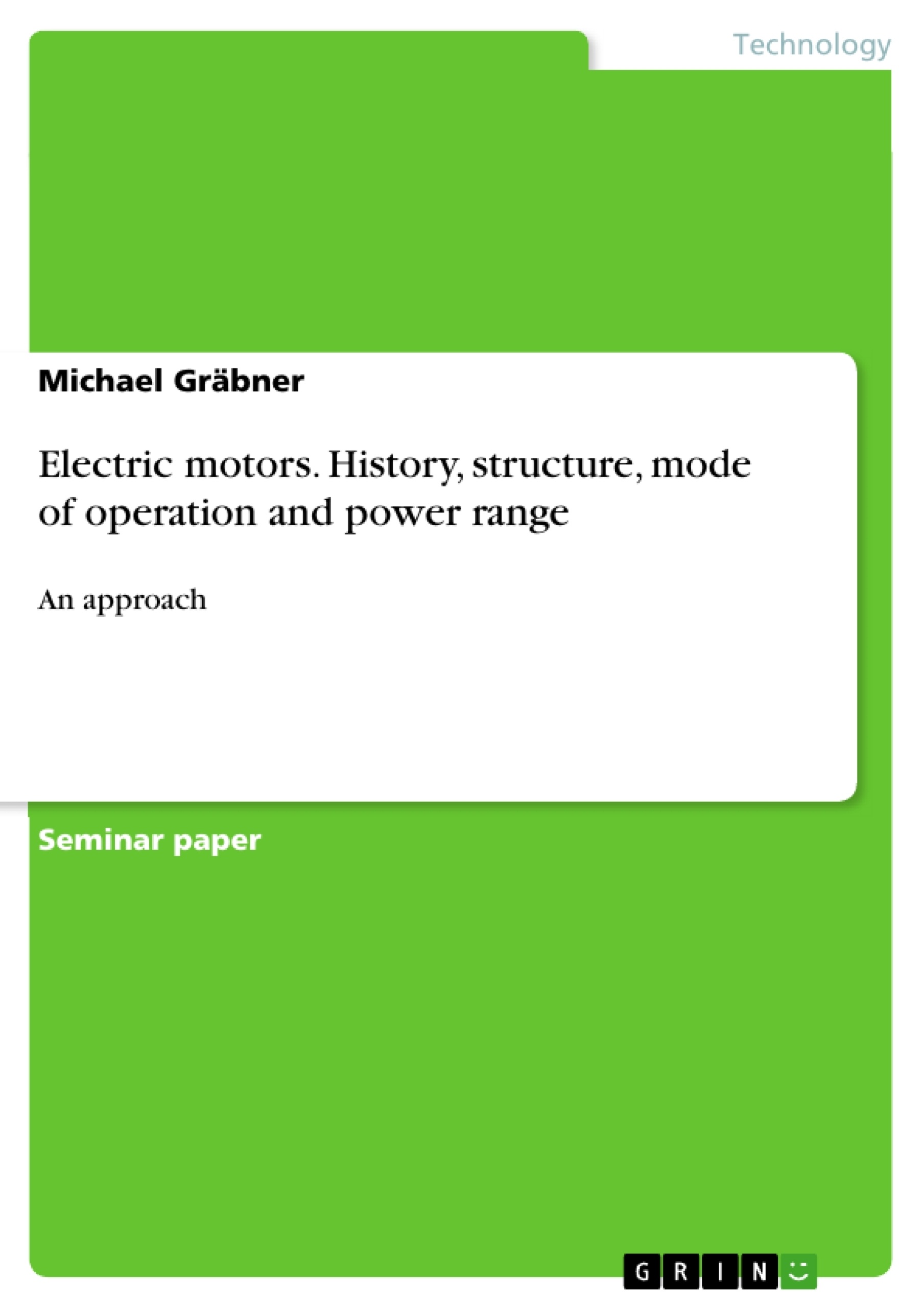In addition to a brief introduction to the historical development of electric motors and considerations of electrotechnical and physical fundamentals, this paper contains a comparison of internal combustion engines and electric motors. Furthermore, requirements and operating modes of electric motors are explained. In the center of the work are treatments of selected electric motors in relation to structure, mode of operation and power range. The work ends with a conclusion in which the advantages and disadvantages of the motor types mentioned and further developments are considered.
Electric motors have a major role to play in terms of potential savings in electricity consumption. Without sufficient measures, it is assumed that worldwide electricity consumption by means of electric motors will almost double by 2030.
Electric motors are responsible for about 40 percent of total electricity consumption worldwide and for about 70 percent of the electricity consumed by industry.
In Germany, electricity consumption by electric motors is about 55 percent, in industry the share is 68 percent, the tertiary sector has a share of 48 percent and the share of private households reaches a level of 41 percent. About 96 percent of the electric motors sold in Europe are used by means of single-phase or polyphase alternating current, and for this reason they are the focus of the observations made in Chapter 7.
The author points out with reference to the limited extent of the work to be provided in connection with the complexity of the topic, which is renounced in particular on the derivation, the bare denomination and the generalization of formulas and formula components.
Inhaltsverzeichnis (Table of Contents)
- Foreword
- Historical development
- Physical and electrotechnical basics
- Comparison of combustion engine/ electric motor
- Requirements for an electric motor in the automobile
- Resistance to oil
- Resistance to water
- Operating modes of an electric motor
- Engine operation
- Generator operation
- Structure and operation of electric motors
- General
- DC motor
- Structure and mode of action of a DC motor
- Power range of the DC motor
- AC motor (1-phase AC)
- AC synchronous motor
- AC asynchronous motor
- Three-phase motor (3-phase alternating current)
- Three-phase synchronous motor
- Structure and mode of action of a three-phase synchronous motor
- Power range of the three-phase synchronous motor
- Three-phase asynchronous motor
- Structure and mode of action of a three-phase asynchronous motor
- Power range of the three-phase asynchronous motor
- Reluctance motor
- Three-phase synchronous motor
- Linear motor
Zielsetzung und Themenschwerpunkte (Objectives and Key Themes)
This text aims to provide a comprehensive overview of electric motors used in automobiles. It explores the historical development of electric motors, their physical and electrotechnical fundamentals, and their diverse applications in modern vehicles.
- Historical development of electric motors for automotive applications
- Physical and electrotechnical principles governing electric motor operation
- Comparison of electric motors with internal combustion engines
- Different types of electric motors used in vehicles, including DC, AC, and three-phase motors
- Key factors influencing the performance and selection of electric motors in automobiles
Zusammenfassung der Kapitel (Chapter Summaries)
- Foreword: This introductory chapter provides a brief overview of the text's scope and purpose, highlighting the significance of electric motors in modern transportation.
- Historical development: This chapter traces the evolution of electric motors, from their early beginnings to their integration into automobiles. It examines key milestones and technological advancements that have shaped their development.
- Physical and electrotechnical basics: This chapter delves into the fundamental physical principles and electrotechnical concepts underlying the operation of electric motors. It covers essential concepts such as electromagnetic induction, magnetic fields, and motor torque.
- Comparison of combustion engine/ electric motor: This chapter compares the advantages and disadvantages of electric motors with traditional internal combustion engines, highlighting the key differences in their operation, efficiency, and environmental impact.
- Requirements for an electric motor in the automobile: This chapter focuses on the specific requirements and considerations for electric motors in automotive applications. It examines factors such as resistance to oil and water, operating temperature, and the need for efficient energy conversion.
- Operating modes of an electric motor: This chapter explores the different operating modes of electric motors, including their use as generators and their ability to function both as motors and generators in hybrid vehicles.
- Structure and operation of electric motors: This chapter provides detailed descriptions of the structure and function of various types of electric motors, including DC motors, AC motors, and three-phase motors. It explains the principles behind their operation and the factors determining their power range and applications.
Schlüsselwörter (Keywords)
The text focuses on electric motors, their historical development, physical principles, operating modes, and applications in automotive technology. Key keywords include electric motor, DC motor, AC motor, three-phase motor, synchronous motor, asynchronous motor, torque, power range, efficiency, resistance to oil, resistance to water, hybrid electric vehicles, automotive applications, and electrotechnical fundamentals.
- Quote paper
- Michael Gräbner (Author), 2015, Electric motors. History, structure, mode of operation and power range, Munich, GRIN Verlag, https://www.hausarbeiten.de/document/1358850


